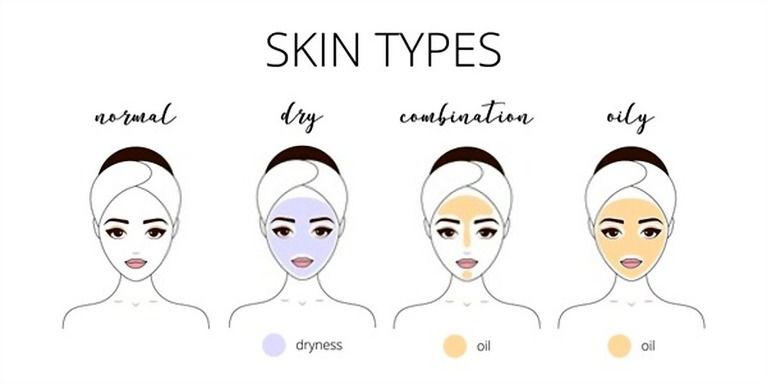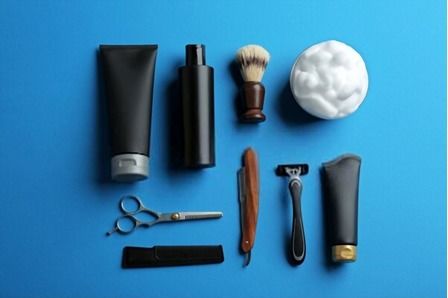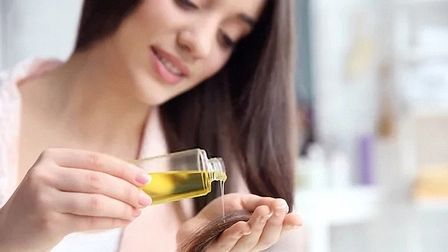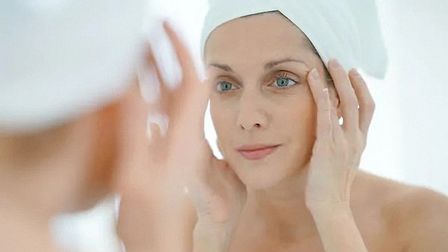
Taking time to learn about your skin type and its specific needs is never wasteful. It’ll help you find out the right cleanser and treatment to finally result in a healthier, more beautiful complexion.
If you’re finding a reliable information source to consult skin experts’ advice, congrats, you’re landing in the right address. Keep reading!
Oily Skin
This is a skin type with overproduction of sebum, known as “seborrhea”.
And there are several elements triggering that issue:
Comedogenic cosmetics
- Over drying your skin, forcing it to produce more oil
- Stress
- Medication
- Hormonal changes and imbalances
- Genetics
The biggest frustrating problem of oily skin is prone to PIH (stands for post-inflammatory hyperpigmentation), meaning that after a breakout has healed, it easily leaves dark spots on your skin.
Besides, it’s easy to comedones (whiteheads and blackheads) that with an improper way of skincare, this situation might get worse and lead to varying forms of acne, such as pustules and papules.
The good news, though, is oily skin looks suppler and younger than other skin types because the excessive oil provides a natural moisture base, making it less wrinkle.
Common Signs To Identify
- Thicker, pale skin: blood vessels are probably invisible
- You notice plenty of excess oil on your face, even in the back, shoulders, and neck

- Your skin is shiny and feels greasy, most commonly throughout the T-zone (chin, nose, and forehead)
- Enlarged, visible pores and they get clogged easily

How To Care For
As your skin type is prone to produce excess oil under different conditions, it can lead to blemishes and clogged pores.
What you should do is finding non-comedogenic products that can balance such excess oil.
Our suggestion is a light foaming cleanser.

It can thoroughly cleanse your skin – up to 85% of makeup types – and soften it without being too harsh to irritate.
Besides, remember to wash your face twice a day and exfoliate 2 or 3 times a week to remove dead skin cells.
What To Avoid
Stay away from oil-based makeup, moisturizers, and cleansers because your skin basically just absorbs moisture.
The rest of these products will mostly be left on the surface as residue, creating clogged pores and then forming different types of acne.

Also, avoid using alcohol-based skincare products or those containing sulfates, these substances are known to dry out skin badly.
Some Recommended Products
There are some big, reliable skincare manufacturers that you can count on, such as Eucerin, Paula’s Choice, and Kiehls.
You can find these products on their official websites or other well-known retailers, such as Nordstrom and Sephora.
- Paula’s Choice Skin Balancing Cleanser
- Paula’s Choice Resist Anti-Aging Foaming Facial Cleanser
- Kiehls Calendula Deep Cleansing Foaming Face Wash
- Kiehls Rare Earth Deep Pore Daily Cleanser
- Aesop Parsley Seed Facial Cleanser
Dry Skin
In contrast to the oily skin, dry skin produces less sebum than normal skin, leading to the lack of lipids needed to keep moisture and protect the skin from outside impacts.
As a result, it makes an impaired barrier function.
Another bad news is dry skin gets the highest risks of aging because it can’t retain enough moisture itself.

Commonly, men will suffer from dry skin less than women, not to say that it exists in various severity levels and in multiple forms that you might not distinguish clearly.
Dry skin is mostly due to climate, hormonal changes, diet, and lifestyle – things that relate to environmental factors and genetics. Dehydration is also a reason for dry skin.
Losing water in the deepest skin layers usually happens via:
- TEWL - Trans-epidermal water loss – This is a passive, natural way in which nearly ½ liter of water is diffused a day through your skin from the deeper skin layers
- Sweating – This is an active way in which water is lost by activities, heat or stress.

There are two other factors causing dry skin are:
- Epidermal lipids, like cholesterol, fatty acids, and ceramides, helps build a healthy skin barrier
- NMFs – Natural moisturizing factors, particularly lactic acid, amino acids, and urea, to bind in water
Common Signs To Identify
There are two common classes of dry skin to identify:
Slightly dry skin: Your skin looks dull and you feel tight, rough, and brittle throughout the day in addition to low skin elasticity

Very dry skin: Aside from the tight feeling and the appearance of blotchy and rough, you will also notice itchiness and mild flakiness in patches on your skin. Irritation might lead to some redness and even infection.

How To Care For
The less the layer of dead skin, the more easily the treatments and serums will be absorbed.
That’s why we always encourage our readers to exfoliate. It should be in higher frequency with dry-skinned people because their amount of dead skin cells is higher than other skin types.
Daily exfoliation with non-abrasive, mild ingredients is highly recommended. It helps promote your skin cell turnover without erasing its natural oils.
The best cleanser for dry skin is in the form of cream or lotion because of its silky texture.

Normally, these types of cleansers can remove most types of makeup but we still advise using separate makeup remover for waterproof products.
What To Avoid
Try to limit drinking caffeine and alcohol because these two drinks are diuretics, which strip the natural oils of your skin.

Avoid using too hot water when bathing, showering, or washing your face.
Consider using a humidifier for your bedroom, dorm room, or home if you have to use a heater during cold weather
Some Recommended Products
- Paula’s Choice Resist Anti-Aging Hydrating Facial Cleanser
- Paula’s Choice Calm Nourishing Cream Facial Cleanser
- Eucerin DermatoCLEAN Mild Cleansing Milk
- Kiehls Ultra Facial Cleanser
- Kiehls Cucumber Herbal Conditioning Cleanser
Sensitive Skin

This skin type is super-prone to get irritation by different factors.
It occurs when the natural barrier function of your skin is compromised, resulting in water loss and penetration of irritants.
This is also the most challenging skin type to manage because it times very much time and effort to determine which is one of the multiple potential reasons causing irritation and inflammation.
Causes of sensitive skin:
- Some ingredients in cleansers and cosmetics
- Temperature changes, weather, and dry climates
- Hard water
- Sunlight and UV rays
- Genetics and hormone fluctuations
Common Signs To Identify
The most common signs to know that you have won the sensitive lottery are:
- Get pesky razor bumps after shaving
- Prone to experience rosacea or eczema

- Easily flush with heat

- Your skin reacts, slightly to seriously, when using a new skincare product

- Easily feel itchy, inflamed or irritated, dry or getting redness
- Sunburn easily

How To Care For
Owning sensitive skin means you have to take care of it more than that for other skin types.
Remember to apply suitable sunscreen when you’re outdoors, keep an eye on your diet, and pay attention to both skincare and cosmetics that you intend to try.
Cream and lotion cleansers are our recommendations for you if dehydration is the main reason for your current skin situation.

If your skin is acne-sensitive, use a light foaming cleanser. And for those who are sensitive to redness, try gel-formed products.
Note: It’s hard to know that if a new product is skin-friendly to you because it can react even to those safe ingredients. So to lower the risks, we advise you to introduce just one new product or formula to your skin at a time.
Remember to patch test the cosmetics or skincare on your inner hand and watch its reaction to this product within 24 hours.

If there’s nothing, you can 90% rest assured to apply on your facial skin.
Become best friends with samples unless you want to waste your money
What To Avoid
Don’t use those products labeled the formulas of parabens, DEA, TEA, urea, phthalates, sulfate detergents, mineral oil, or synthetic fragrances.
Avoid trying any skincare products that contain inflame potential irritations or allergies.
Some Recommended Products
- Cetaphil Gentle Skin Cleanser
- Kiehl's Ultra Facial Cleanser
- Kiehl's Calendula Deep Cleansing Foaming Face Wash
- Kiehl's Dermatologist Solutions Centella Sensitive Facial Cleanser
- Eucerin DermatoCLEAN 3 in 1 Micellar Cleansing Fluid
Combination Skin
The skin types are varied in the cheeks and the T-zone when it comes to combination skin. The so-called T-zone might substantially differ from an extended area to a very narrow zone.
There are specific factors impacting each part of the combination skin. Namely, it is a corresponding lipid deficiency and a lack of sebum on the drier parts while the oilier is caused by an over sebum production.
Common Signs To Identify
- Normal to dry cheeks

- Enlarged pores in the T-zone, probably with some impurities

- You find excess oil in this area
How To Care For
As made up of multiple skin types, combination skin is harder to care for.
Remember your goal is “balance”.
And the best kind of skincare products for you is the all-type formulas as it helps balance skin without causing excess oil or over-drying.
The best types of cleansers for you are gel or light foaming.

What To Avoid
To save your drier parts, don’t let your body dehydrate. Remember to drink at least 2 liters of water a day and stay away from alcohol-based products.
When applying skincare products, target on separate formulas specifically made for different zones on your face. Avoid using ultra-hydration or formulated products for oil control on your entire face.
Some Recommended Products
- Eucerin DermatoCLEAN Refreshing Cleansing Gel
- Caudalie Instant Foaming Cleanser
- Clinique Rinse-Off Foaming Cleanser
- Kiehls Ultra Facial Cleanser
- Facial Fuel Energizing Face Wash
Normal Skin
Well-balanced skin is known as the normal skin and this is the easiest type to care for.
Take note that sometimes your skin might have some symptoms like oily T-zone but in general, moisture and sebum are balanced while your skin isn’t overly dry or oily.
Common Signs To Identify
- No blemishes
- A fresh, rosy-colored uniform transparency

- A smooth, velvety, and soft texture
- Good blood circulation
- Fine pores
- Not prone to sensitivity
Note: It’s very easy for a person who has normal skin becoming dryer so you still have to care for it properly.
How To Care For
The best part of owning normal skin is you can try different types of cleansers. But for gentle cleaning performance without tripping the natural oil on your skin, we advise trying cream/lotion or gel cleansers.

They can easily get rid of light makeup while being lightweight and hydrating to leave your skin feeling fresh and well-moisturized.
Besides, remember to gently exfoliate to keep your cheek and T-zone balance.
What To Avoid
The bad news for you, normal skin is one of the first skin types showing aging signs over time.
Avoid using those products that are prone to cause a shift in your skin to be overly dry or oily. Our most sincere advice for you is starting to add hydrating and anti-aging products in your skincare routine as soon as possible for good prevention.

It’s ideal to begin in your early 20’s.
Some Recommended Products
Youth to the People Kale + Green Tea Spinach Vitamins Age Prevention Cleanser
- Paula's Choice Resist Perfectly Balanced Foaming Cleanser
- Kiehls Ultra Facial Cleanser
- Kiehls Clearly Corrective Brightening & Exfoliating Daily Cleanser
- Kiehls Herbal-Infused Micellar Cleansing Water
Conclusion
There’s no good or bad skin type after all because all of them require a specific skincare routine. Under the improper methods, yours will be quickly degraded and appear skin-related problems, like acne, irritation, or aging.
We hope this guide has dropped you many useful pieces of information. Thanks for reading!




